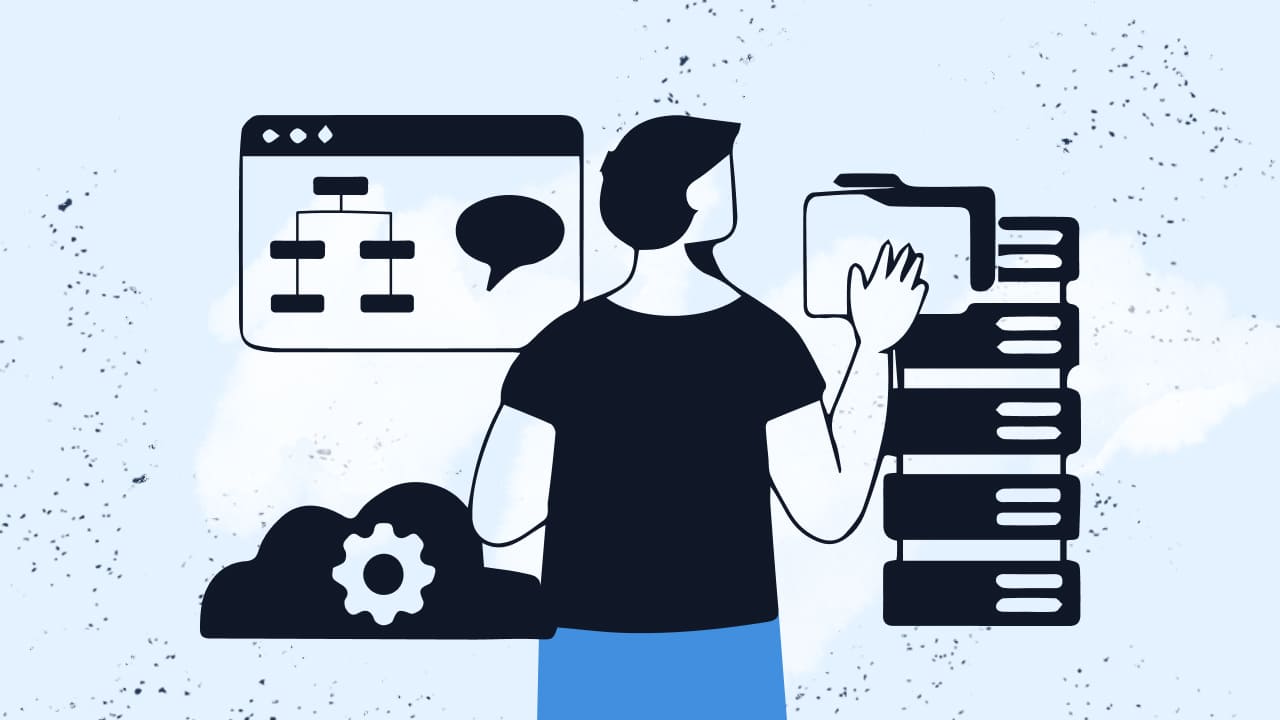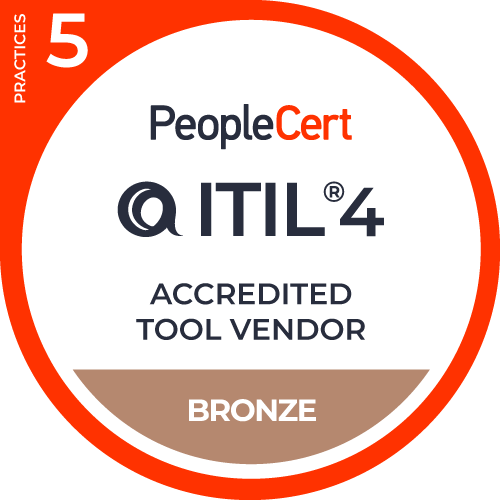In the world of Data Management, the ability to integrate and transform data from various sources into a cohesive, usable format is paramount. SQL Server Integration Services (SSIS) has long been the go-to tool for IT professionals tasked with this challenge.Among its various iterations, SSIS 816 stands out for its robust features and capabilities that elevate data integration to new heights. In this article, we’ll dive deep into SSIS 816, exploring its definition, history, features, and the future of this essential tool.
What is data integration?
Data integration is the process of combining data from multiple, disparate sources into a single, unified view. This process is essential for businesses that rely on data-driven decision-making, as it ensures that all relevant information is available in a consistent and accessible format.
Data integration can involve merging databases, consolidating information from various applications, and even transforming data into a format suitable for analysis.
In the context of IT Service Management (ITSM) and IT Asset Management (ITAM), data integration plays a critical role. It allows organizations to break down data silos, ensuring that information flows seamlessly across departments and systems.
This flow is vital for maintaining operational efficiency, enhancing decision-making, and providing a comprehensive view of an organization’s assets and services.
The importance of data integration has grown exponentially with the rise of big data, cloud computing, and the Internet of Things (IoT). Organizations now manage vast amounts of data from a variety of sources, making the need for effective data integration solutions like SSIS 816 more pressing than ever.

What is Data Management as a Service (DMaaS)?
What is SQL Server Integration Services (SSIS)?
SQL Server Integration Services (SSIS) is a powerful data integration tool that is part of the Microsoft SQL Server suite. SSIS enables IT professionals to develop high-performance data transformation and migration solutions. It’s designed to handle a wide range of data integration tasks, from simple data transfers to complex workflows that involve multiple steps and data sources.
At its core, SSIS is an ETL (Extract, Transform, Load) tool. ETL is a process that involves:
- Extracting data from various sources, such as databases, flat files, and cloud storage.
- Transforming the data into a desired format, which may involve cleaning, aggregating, and applying business rules.
- Loading the transformed data into a target system, such as a data warehouse or another database.
SSIS simplifies these tasks with a visual design interface, pre-built components, and the ability to develop custom scripts. It also supports automation, enabling IT teams to schedule data integration tasks without manual intervention.
SSIS’s flexibility makes it a versatile tool for organizations of all sizes. It can be used for data migration, data warehousing, data cleansing, and automating SQL Server database maintenance tasks. With SSIS, businesses can ensure their data is accurate, up-to-date, and ready for analysis, making it a key component of their ITSM and ITAM strategies.
What is SSIS 816?
SSIS 816 is a specific version of SQL Server Integration Services that introduces advanced features and optimizations tailored for modern data integration needs. While previous versions of SSIS have been powerful in their own right, SSIS 816 takes it a step further by providing enhanced performance, scalability, and flexibility.
One of the key highlights of SSIS 816 is its ability to handle large datasets more efficiently. As organizations continue to collect and generate massive amounts of data, the need for a data integration tool that can process this information quickly and accurately becomes critical. SSIS 816 meets this demand by offering optimized data flows, improved memory management, and support for parallel processing.
SSIS 816 also introduces new transformation components that allow for more complex data manipulations. These components enable IT professionals to perform intricate data cleaning, aggregation, and validation tasks with ease. Whether you’re dealing with structured data from traditional databases or unstructured data from new-age sources, SSIS 816 provides the tools needed to transform this data into valuable insights.
Moreover, SSIS 816 is designed with integration in mind. It offers seamless compatibility with a wide range of data sources, including cloud services, big data platforms, and various third-party applications. This flexibility ensures that organizations can integrate their data regardless of where it resides, making SSIS 816 a critical asset in their ITSM and ITAM arsenals.
History of SSIS 816
The history of SSIS 816 is closely tied to the evolution of SQL Server Integration Services as a whole. SSIS was first introduced with SQL Server 2005, replacing the older Data Transformation Services (DTS) that came with SQL Server 7.0 and 2000. The introduction of SSIS marked a significant leap forward in terms of capabilities, offering a more powerful and flexible platform for data integration.
Over the years, SSIS has seen numerous updates, each bringing new features and improvements. The release of SQL Server 2008 introduced better performance, new transformation components, and enhanced scripting capabilities. Subsequent versions continued this trend, with SQL Server 2012 adding integration with the cloud and SQL Server 2016 introducing in-memory processing for faster data transformations.
SSIS 816, part of the latest iterations, represents the culmination of years of development and refinement. It builds on the strengths of its predecessors while introducing new features that address the growing demands of modern data environments. The history of SSIS 816 is a testament to Microsoft’s commitment to providing a top-tier data integration tool that evolves with the needs of its users.
SSIS 816 features and capabilities
SSIS 816 is loaded with features that make it a powerhouse in the realm of data integration. Here’s a closer look at some of the key capabilities that set it apart:
- Advanced data transformation: SSIS 816 offers a wide array of transformation components that allow for intricate data manipulation. Whether you need to perform simple data conversions or complex aggregations, SSIS 816 has you covered. New components introduced in this version include advanced text processing, machine learning integration, and real-time data streaming.
- High performance: Performance is a critical consideration when dealing with large datasets. SSIS 816 is optimized for speed, offering improvements in data flow management, memory allocation, and parallel processing. These enhancements ensure that even the most demanding data integration tasks are completed efficiently.
- Scalability: One of the standout features of SSIS 816 is its scalability. It’s designed to handle data integration tasks of all sizes, from small-scale operations to enterprise-level projects. This scalability is achieved through features like dynamic package configurations, which allow SSIS packages to adjust based on the environment in which they are deployed.
- Integration with other systems: SSIS 816 excels in its ability to integrate with a wide range of data sources and systems. Whether you’re working with on-premises databases, cloud storage solutions, or big data platforms, SSIS 816 offers connectors and adapters that make integration seamless. This capability is especially important for organizations that rely on diverse data ecosystems.
- Enhanced security: Data security is a top priority for organizations, and SSIS 816 addresses this concern with enhanced security features. These include improved encryption for data at rest and in transit, as well as more granular control over user permissions. This ensures that sensitive data is protected throughout the integration process.
- Comprehensive logging and monitoring: SSIS 816 introduces advanced logging and monitoring tools that provide real-time insights into data integration tasks. These tools allow IT teams to track the progress of SSIS packages, identify potential issues, and optimize performance. This level of visibility is crucial for maintaining the reliability and efficiency of data integration workflows.
- Support for big data: As organizations increasingly work with big data, SSIS 816’s support for big data platforms like Hadoop and Azure Data Lake becomes invaluable. SSIS 816 provides native connectors and transformation components specifically designed for big data environments, making it easier to process and integrate large volumes of data.
Applications of SSIS 816
SSIS 816 is a versatile tool that can be applied across various industries and use cases. Here are some of the most common applications:
- Data migration: One of the primary uses of SSIS 816 is data migration. Whether you’re upgrading systems, consolidating databases, or moving data to the cloud, SSIS 816 provides the tools needed to transfer data accurately and efficiently. Its ability to handle large datasets and complex transformations makes it ideal for migration projects.
- Data warehousing: SSIS 816 is also widely used in data warehousing. By aggregating data from multiple sources into a centralized data warehouse, organizations can gain a comprehensive view of their operations. SSIS 816’s advanced transformation capabilities ensure that data is cleaned, validated, and ready for analysis.
- Business intelligence: In the realm of business intelligence, SSIS 816 plays a crucial role in preparing data for reporting and analysis. By integrating and transforming data from various sources, SSIS 816 ensures that business intelligence tools have access to accurate and up-to-date information. This enables organizations to make informed decisions based on real-time data.
- Automating workflows: SSIS 816 is also used to automate repetitive tasks, such as data backups, system maintenance, and data synchronization. By automating these tasks, organizations can reduce the risk of human error, improve efficiency, and free up IT resources for more strategic initiatives.
- Real-Time Data Integration: With the rise of real-time analytics, SSIS 816’s ability to integrate and transform data in real-time has become increasingly important. Organizations can use SSIS 816 to process streaming data from IoT devices, social media, and other real-time sources, enabling them to react quickly to changing conditions.
- Data Cleansing and Validation: Ensuring data quality is essential for any data-driven organization. SSIS 816 offers robust data cleansing and validation tools that help organizations remove duplicates, correct errors, and enforce business rules. This ensures that the data used in decision-making is accurate and reliable.

Workflow Automation Guide: Definition, Benefits, And Software
Best practices for implementing SSIS 816
Implementing SSIS 816 effectively requires careful planning and adherence to best practices. Here are some key considerations:
- Understand your data requirements: Before you start building SSIS packages, it’s important to have a clear understanding of your data requirements. This includes knowing what data needs to be integrated, where it’s coming from, how it needs to be transformed, and where it will be loaded. A thorough understanding of these requirements will guide the design of your SSIS packages.
- Optimize data flows: Data flow optimization is crucial for ensuring that SSIS packages run efficiently. This involves minimizing the number of transformations in a data flow, reducing the amount of data processed, and avoiding unnecessary joins and lookups. SSIS 816 provides various tools and techniques for optimizing data flows, including buffer management and parallel processing.
- Use logging and error handling: Robust logging and error handling are essential for maintaining the reliability of SSIS packages. SSIS 816 offers comprehensive logging options that allow you to track the progress of your packages, identify issues, and troubleshoot errors. It’s important to implement error handling at both the task and package levels to ensure that any issues are captured and addressed.
- Test thoroughly: Thorough testing is a critical step in the implementation process. Before deploying SSIS packages to production, it’s important to test them in a staging environment that mirrors your production environment. This allows you to identify and resolve any issues before they impact your live systems. Testing should include functional testing, performance testing, and stress testing to ensure that your SSIS packages can handle the demands of production.
- Leverage SSIS features: SSIS 816 offers a wide range of features that can enhance the efficiency and effectiveness of your data integration tasks. It’s important to leverage these features to their full potential. This includes using SSIS expressions for dynamic package configurations, taking advantage of SSIS’s built-in transformations, and utilizing the SSIS catalog for package management.
- Document your work: Proper documentation is often overlooked, but it’s essential for maintaining SSIS packages over time. Documentation should include detailed descriptions of each package, its purpose, the data sources and destinations it uses, and any transformations that are applied. This will make it easier to troubleshoot issues, make updates, and hand off packages to other team members.
- Stay up-to-date with best practices: The world of data integration is constantly evolving, and it’s important to stay up-to-date with the latest best practices. This includes keeping abreast of new features and updates in SSIS 816, as well as industry trends in data management. Regularly reviewing and updating your SSIS packages to align with current best practices will ensure that they remain efficient and effective.
Future of SSIS 816
The future of SSIS 816 is bright, with ongoing developments aimed at enhancing its capabilities and addressing the evolving needs of data integration. As organizations continue to generate and rely on vast amounts of data, the demand for powerful data integration tools like SSIS 816 will only grow.
One area of potential growth for SSIS 816 is in the integration of machine learning and artificial intelligence. As AI and machine learning become more prevalent in data analysis, there will be a need for data integration tools that can seamlessly integrate these technologies into existing workflows. SSIS 816 is well-positioned to evolve in this direction, offering features that allow organizations to incorporate machine learning models into their data integration processes.
Another area of growth is the continued integration with cloud platforms. As more organizations move their data to the cloud, the ability of SSIS 816 to integrate with cloud-based data sources and platforms will become increasingly important. Future updates to SSIS 816 are likely to include enhanced cloud integration features, making it easier for organizations to manage their data in a hybrid or fully cloud-based environment.
The rise of real-time analytics is also expected to influence the future of SSIS 816. As businesses increasingly rely on real-time data to make decisions, SSIS 816’s real-time data integration capabilities will become even more critical. Future updates may include enhancements to real-time processing, making it easier for organizations to process and integrate streaming data.
Finally, the focus on data security and privacy is expected to continue shaping the future of SSIS 816. As data breaches and privacy concerns become more prevalent, organizations will need data integration tools that offer robust security features. SSIS 816 is likely to evolve to include more advanced security measures, ensuring that data is protected throughout the integration process.
Conclusion
SQL Server Integration Services (SSIS) 816 is a powerful and versatile tool that plays a critical role in modern data integration. With its advanced features, high performance, and scalability, SSIS 816 is well-equipped to handle the complex data integration needs of today’s organizations. Whether you’re migrating data, building a data warehouse, or automating workflows, SSIS 816 provides the tools and capabilities needed to succeed.
The history of SSIS 816 reflects a continuous evolution in response to the growing demands of data integration. As we look to the future, SSIS 816 is poised to remain a key player in the world of data management, with ongoing developments that will further enhance its capabilities.
For organizations looking to harness the full potential of SSIS 816, it’s important to follow best practices, stay up-to-date with the latest developments, and leverage the tool’s full range of features. By doing so, you can ensure that your data integration tasks are completed efficiently, accurately, and securely.
Frequently Asked Questions (FAQs)
1. What makes SSIS 816 different from previous versions?
SSIS 816 introduces enhanced performance, advanced data transformation capabilities, and better scalability compared to earlier versions. It’s designed to handle larger datasets, integrate with a wider range of data sources, and support more complex workflows.
2. Can SSIS 816 be integrated with non-Microsoft systems?
Yes, SSIS 816 supports integration with a wide range of data sources, including non-Microsoft systems. This includes cloud platforms, big data environments, and various third-party applications, making it a versatile tool for organizations with diverse data ecosystems.
3. Is SSIS 816 suitable for small businesses?
Absolutely! SSIS 816 is scalable and can be tailored to meet the needs of businesses of all sizes, from small startups to large enterprises. Its flexibility and ease of use make it a valuable tool for small businesses looking to improve their data integration processes.
4. How does SSIS 816 handle real-time data integration?
SSIS 816 offers robust support for real-time data integration, allowing organizations to process and integrate streaming data from various sources. This capability is particularly valuable for businesses that rely on real-time analytics and need to react quickly to changing conditions.


